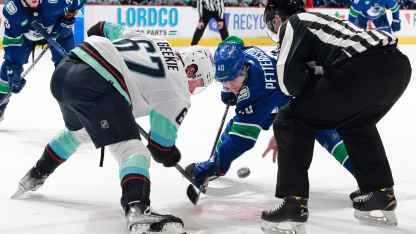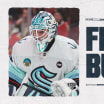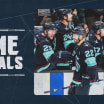So, to understand what we should be looking for, lets understand the process of a faceoff a bit more. The intent of a faceoff can vary greatly depending on where the faceoff is, the handedness of your defenders, the player you are facing on the dot, game state (penalty kill, power play, empty net), etc. Sometimes you need possession. Sometimes you want to execute a set scoring play. Sometimes all you want to do is get the puck out of your zone. These are all things the team will discuss as part of their game prep, and touch base in real-time play-to-play based on what players see as they set up for the faceoff.
"We start with zones and what (handedness) our 'D' are," Geekie said. "If we have two righties versus two lefties or one of each, it'll change our game plan a little bit. After that, we'll go over our scouting report on the team…what they like to do in their forecheck, and how they like to pressure off draws. After that, we'll either call weak side, (the far side where the circle isn't) or strong side and then we have a few set plays that we do, like everyone does, depending on where we are."
Equally important, as Adam Larsson points out, even if every player knows what they are supposed to do, many pucks come down to a 50-50 battle and that's where the other skaters on the ice come into play. Within the game plan, skaters need to battle for possession or provide a teammate time and space to do so.
"I think it's on the D to make a good play with the puck," Dunn said. "But I think it's on the forwards to give us time with the puck. They're the ones who (hold back the opponent), push guys in, or sprint out to create room for us."
So ultimately, a faceoff win may or may not be "awarded" to the player who gained it. And, the context of a game can dictate a different result for every single faceoff.
To that end, as part of understanding play on the dot more completely, the Kraken video staff of Tim Ohashi and Brady Morgan mark and "score" every faceoff in a game. The goal is to get as accurate a view as possible of what is happening with each center in addition to the context around each faceoff.
That helps the coaching staff identify trends because players can have different levels of success game to game. It also segments out one critical piece of that puzzle by looking first at what the centerman contributes before evaluating the resulting edge battles or whether the following play is net positive or net negative.



















